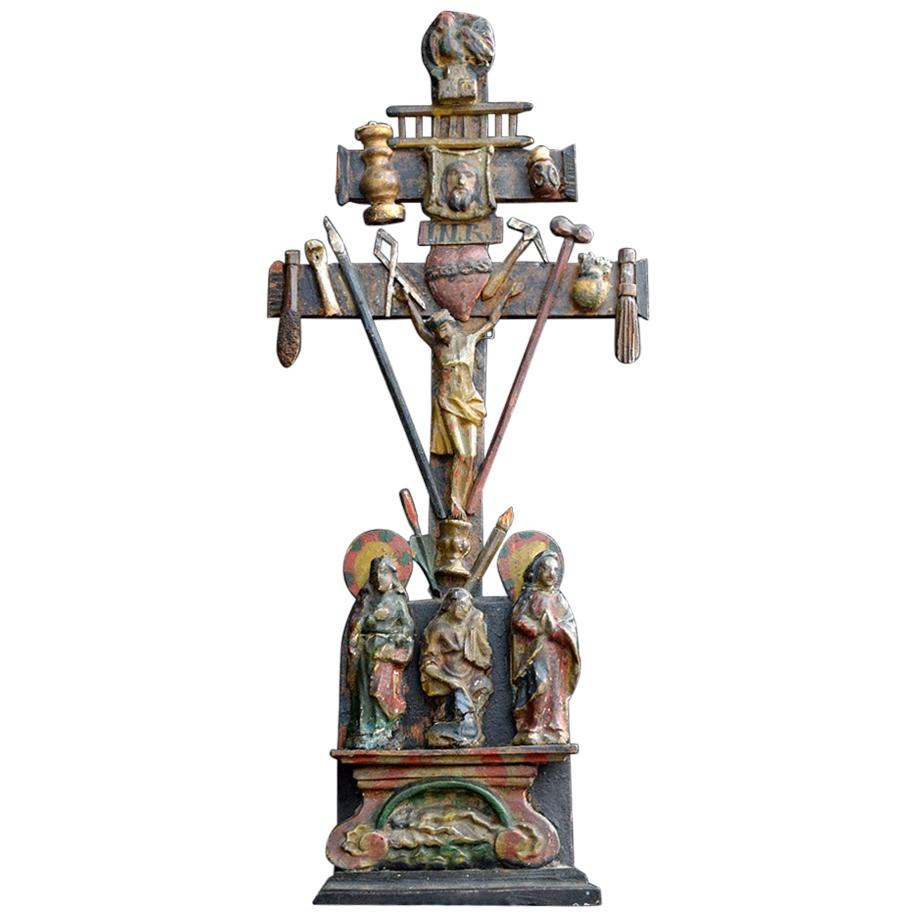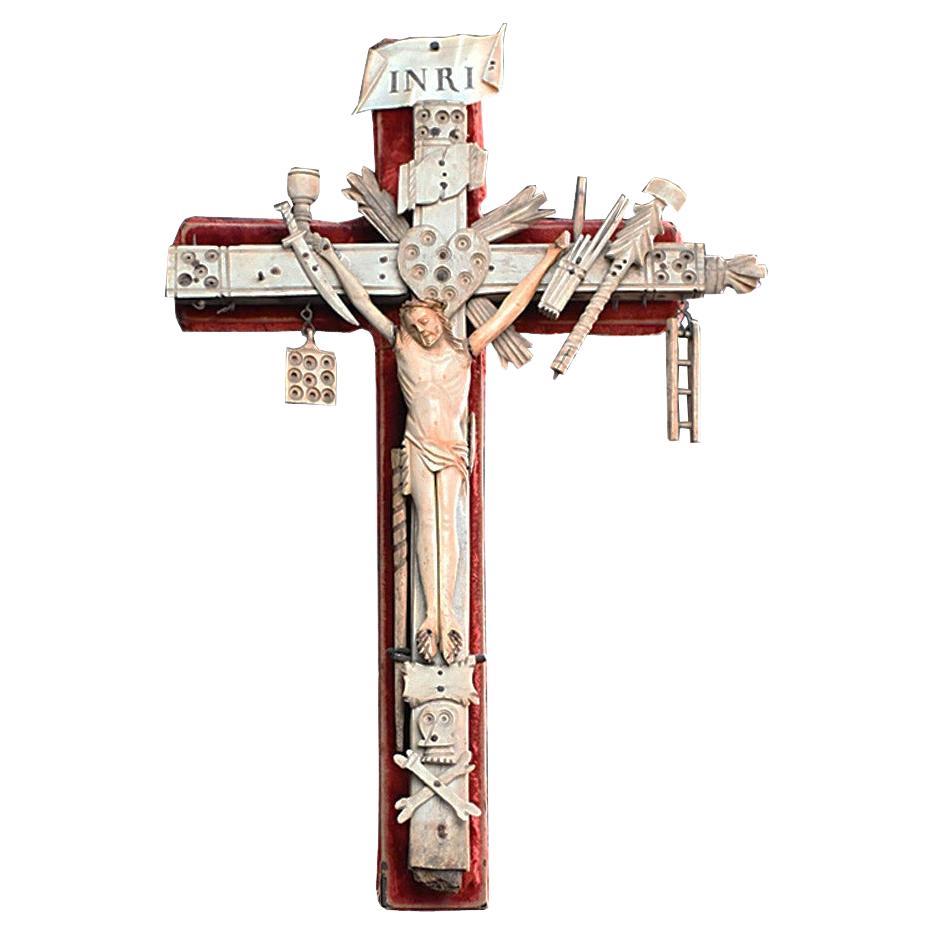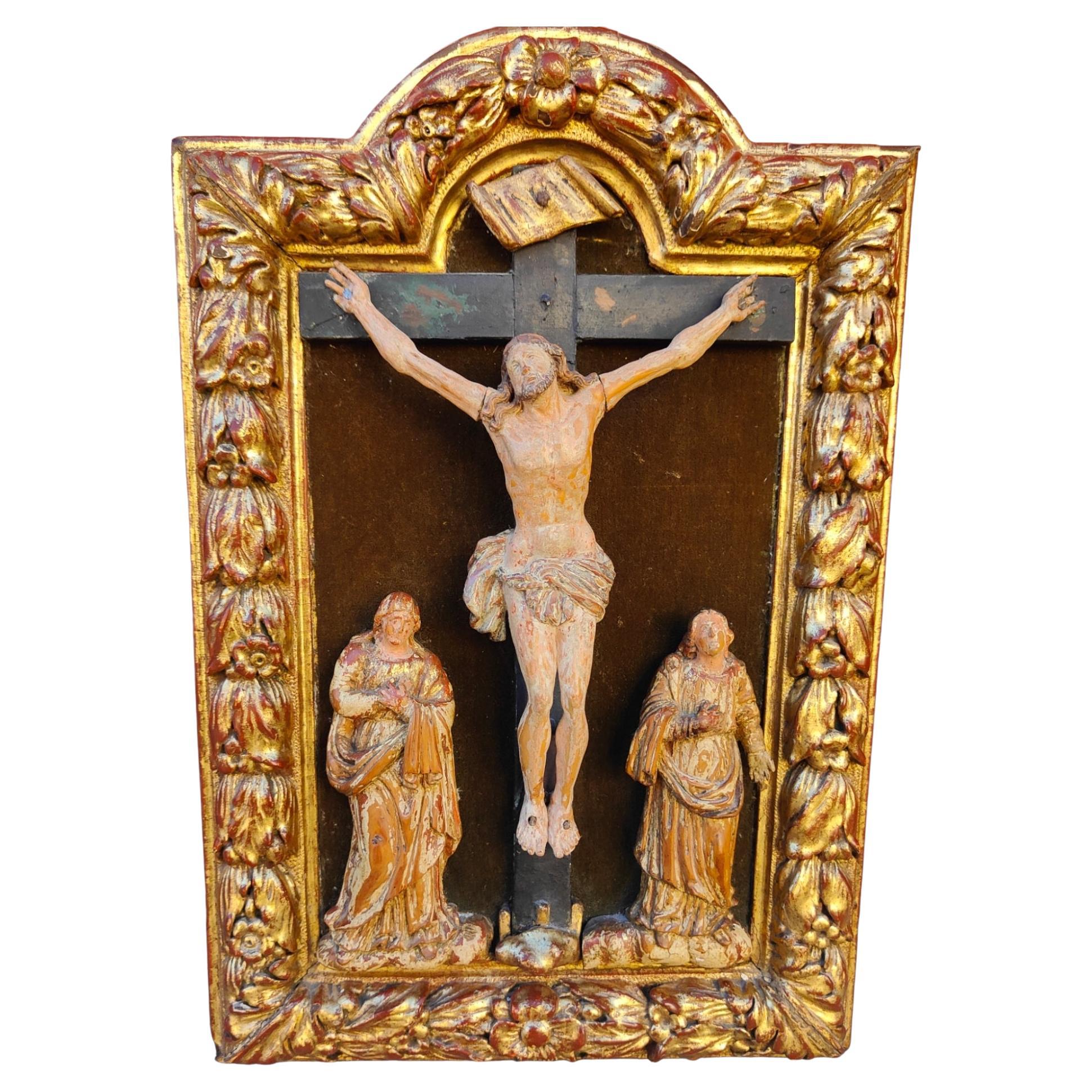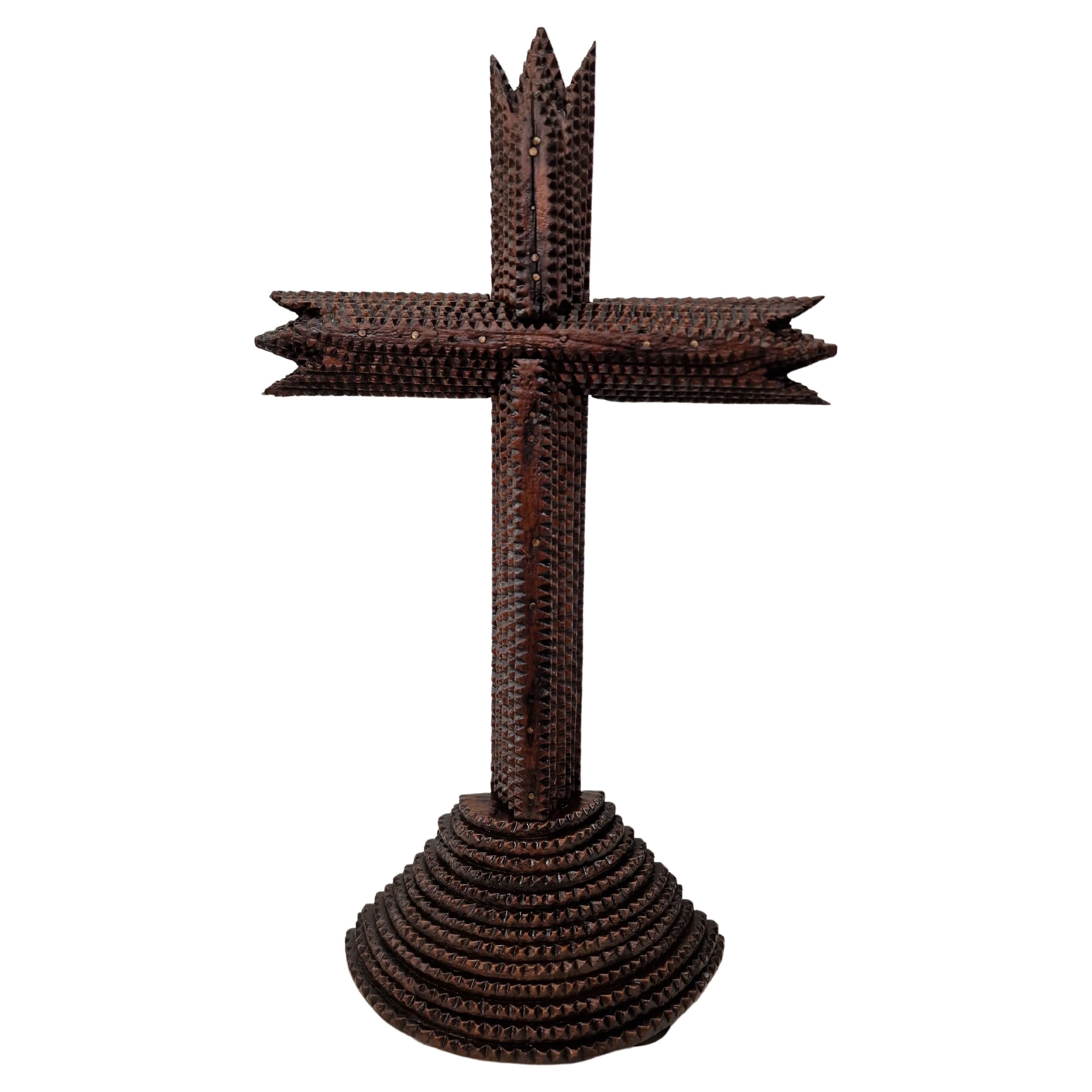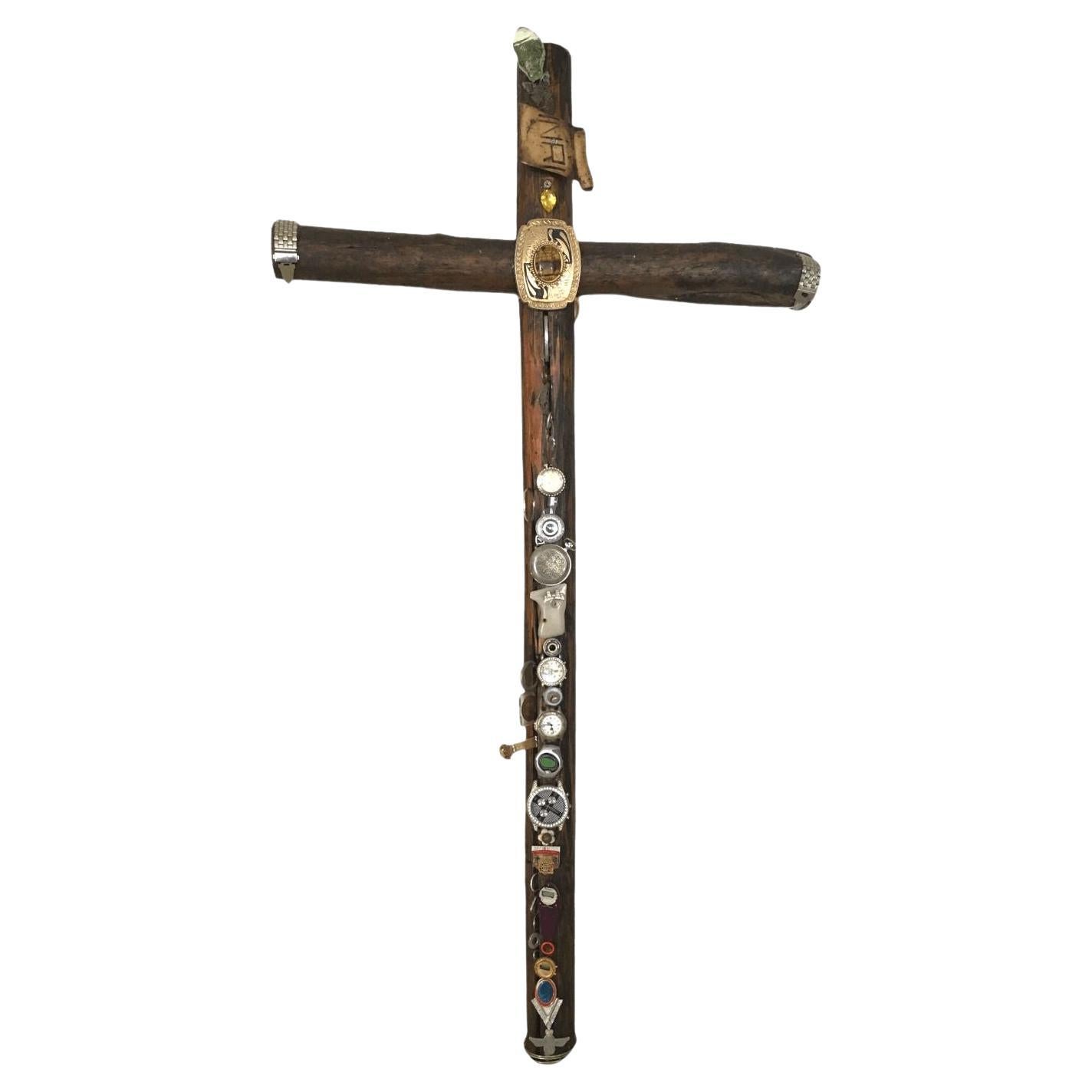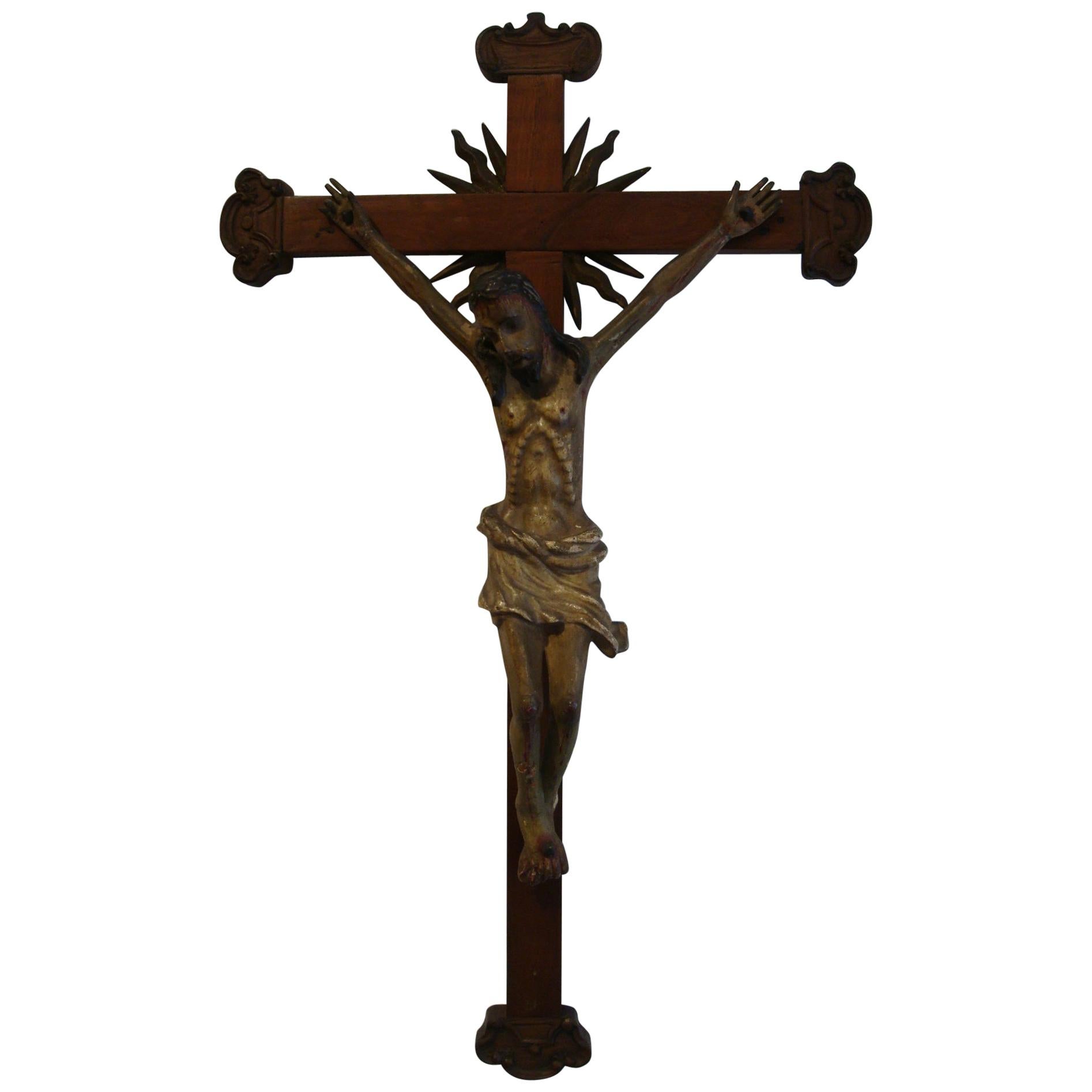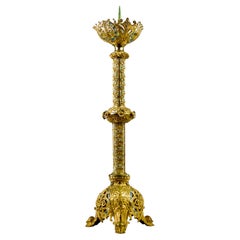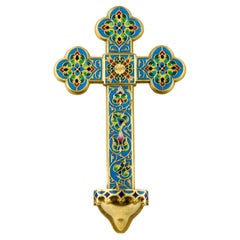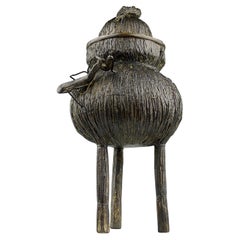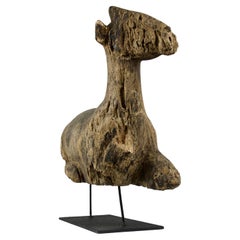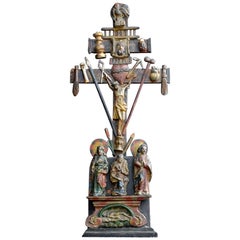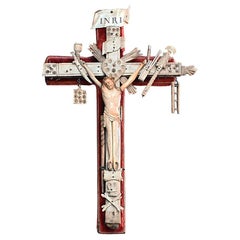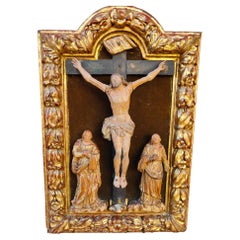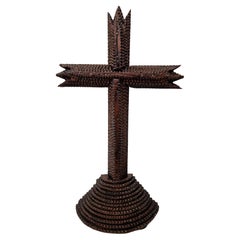Items Similar to Arma Christi Calvary, France 19th Century
Want more images or videos?
Request additional images or videos from the seller
1 of 11
Arma Christi Calvary, France 19th Century
$1,497.68
£1,114.72
€1,250
CA$2,051.45
A$2,281.66
CHF 1,191.41
MX$27,765.33
NOK 15,216.12
SEK 14,270.04
DKK 9,515.81
Shipping
Retrieving quote...The 1stDibs Promise:
Authenticity Guarantee,
Money-Back Guarantee,
24-Hour Cancellation
About the Item
Superb and rare Arma Christi calvary, popular work, France end of the 19th century. Beautifully executed work.
Fair condition. Several small misses and ancient restaurations. Seen in pictures.
Dimensions in cm ( H x L x l ) : 45 x 30 x 9.5
Secure shipping.
- Dimensions:Height: 17.72 in (45 cm)Width: 11.82 in (30 cm)Depth: 3.75 in (9.5 cm)
- Style:Folk Art (Of the Period)
- Materials and Techniques:
- Place of Origin:
- Period:
- Date of Manufacture:19th Century
- Condition:Repaired: Ancient repairs have been made to one of the elements. Minor losses. Many small misses but overall very good visual condition.
- Seller Location:PARIS, FR
- Reference Number:1stDibs: LU8131234179952
About the Seller
5.0
Vetted Professional Seller
Every seller passes strict standards for authenticity and reliability
Established in 2020
1stDibs seller since 2023
17 sales on 1stDibs
Typical response time: 1 hour
- ShippingRetrieving quote...Shipping from: PARIS, France
- Return Policy
Authenticity Guarantee
In the unlikely event there’s an issue with an item’s authenticity, contact us within 1 year for a full refund. DetailsMoney-Back Guarantee
If your item is not as described, is damaged in transit, or does not arrive, contact us within 7 days for a full refund. Details24-Hour Cancellation
You have a 24-hour grace period in which to reconsider your purchase, with no questions asked.Vetted Professional Sellers
Our world-class sellers must adhere to strict standards for service and quality, maintaining the integrity of our listings.Price-Match Guarantee
If you find that a seller listed the same item for a lower price elsewhere, we’ll match it.Trusted Global Delivery
Our best-in-class carrier network provides specialized shipping options worldwide, including custom delivery.More From This Seller
View AllCandle Stick, France, 19th Century
Located in PARIS, FR
Superb church altar candlestick of the Romantic period. Decorations in gold leaf and blue and white enamel of flowers, fleur-de-lys (symbol of the French royal house) and rams at the...
Category
Antique 19th Century French Romantic Candlesticks
Materials
Bronze, Gold Leaf
Ferdinand Barbedienne, Cloisonné Enamel Arabesque Crucifix, France 19th Century
By Ferdinand Barbedienne
Located in PARIS, FR
Beautiful antique crucifix cross in cloisonné arabesque and floral shaped enamel and gilt bronze by the Ferdinand Barbedienne foundry. Signed F. Barbedienne. France 19th century.
Tr...
Category
Antique 19th Century French Romantic Wall-mounted Sculptures
Materials
Bronze, Enamel
Incense Burner, Japan, 19th Century
Located in PARIS, FR
Beautiful incense burner in the shape of a straw basket with a praying mantis sitting on top. Bronze, Japan 19th century.
Good condition, oxidation, one leg missing from the prayi...
Category
Antique Mid-19th Century Japanese Meiji Urns
Materials
Bronze
Han Dynasty, Laying Doe Wood Sculpture, China 100AD
Located in PARIS, FR
Superb sculpture of a laying doe from the Chinese Han Dynasty (206BC-220AD). Remainders of polychromic paint, namely red, symbol of good fortune and joy as well as the season of summer, and green, symbol of vigor and vitality and the season of spring. Mounted on base.
A similar sculpture in bronze is kept at the Met Museum with the following description " A low bed, small table, and screen were often the only furnishings in a Han-dynasty room. The floors were generally covered with mats kept in place with weights in the shape of single animals, fighting beasts, or entertainers."
Condition seen in pictures.
Dimensions in cm ( H x L x l ) :
- Sculpture : 35 x 40 x 10
- With base : 45.5 x 44 x 15
The Han Dynasty ruled China from 206 B.C. to 220 A.D. and was the second imperial dynasty of China. It is known for its promotion of Confucianism as the state religion and opening the Silk Road trade route to Europe, permanently altering the course of Chinese history. Han Dynasty art and inventions like paper still influence the world today.
From the Han Dynasty to the present, deer can be found in many materials and media—rock crystal, nephrite, ink on paper, porcelain, cloisonné enamel, jade, bamboo root, textile, bronze, etc.—alone or in groups, among trees and rocks and in various positions. They appear on everyday objects, from boxes to incense burners, incense holders, lamps, mirror holders and the droppers scholars used when they wrote. A symbol of longevity and grace in Chinese mythology, the word deer is pronounced lu, a homonym for emoluments—favors granted to officials. They therefore represent wealth, nobility and success in imperial examinations (civil service exams for selecting candidates for the state bureaucracy in Imperial China).
Deer were the faithful companions of Shu Lao, the god of longevity, and the goddess Magu. They were reputed to live long and to be the only creature able to find the mushroom of immortality, linghzhi. Although its spots are different, deer are sometimes confused or associated with stags, a Manchu hunting trophy whose antlers served to make prestigious furniture. (La Gazette Drouot, Claire Papon)
For the colours found on this piece, in Chinese culture, red symbolizes good fortune and joy. Green, symbolizes the spring when everything is brimming over with vigor and vitality.
The Han Dynasty (206 B.C. to 220 A.D.) continued the Qin Dynasty’s use of dark colours, but incorporated red. During the earlier years, or Western Han Dynasty, ordinary people wore red while court dress was black. Shoes were red in color. The clothing worn for sacrificial rites was black edged with red. In the later Eastern Han Dynasty, red symbolized the dynasty’s “fire Virtue” and became predominant. Court dress was red. Sacrificial rites called for a red-edged white layer under robes with red socks...
Category
Antique 15th Century and Earlier Chinese Han Mounted Objects
Materials
Wood
19th Century Russian Cossack Guéridon
Located in PARIS, FR
Superb Russian Cossack marquetry guéridon from the 19th century. The table top is removable and can be set in place with screws.
In fair condition, the foot has a split in the wood....
Category
Antique 19th Century Russian Louis Philippe Gueridon
Materials
Wood
Salvado Voltas, "the Hunt", Spain Art Deco Period 1920s
Located in PARIS, FR
Superb and rare sculpture of the hunt by Salvado Voltas. In bronze with medalized patina on a base of green and brown white veined alabaster, Spanish Art Deco school...
Category
Vintage 1920s Spanish Art Deco Figurative Sculptures
Materials
Alabaster, Bronze
You May Also Like
Amazing Arma Christi, circa 1850
Located in London, GB
Amazing Arma Christi, circa 1850
We are proud to offer an amazing museum quality circa 1850 Arma Christi. Likely German or Austrian in origin, an excepti...
Category
Antique 1850s German Folk Art Religious Items
Materials
Wood
19th Century Napoleonic Prisoner of War Folk Art Corpus
Located in London, GB
19th century Napoleonic Prisoner of War Folk art Corpus
A rare and unusual example of a 19th Century hand crafted Napoleonic folk art prisoner of war corpus Christi. Later added ...
Category
Antique 19th Century Unknown Folk Art Religious Items
Materials
Bone
Calvary XVIIth Century, Religious
Located in Madrid, ES
Calvary XVIIth century, religious
17th Century Calvary, religious Ancient Calvary from the 17th century carved in boxwood Boxwood is characterized by its hardness and difficult pruning. It has traces of polychromy and gold. Measure: 65x45...
Category
Antique 1670s European Classical Roman Religious Items
Materials
Fruitwood
Exceptionally rare cross, tramp art, 1900, Schwarzwald / Austria
Located in Wien, AT
Exceptionally rare cross, made in tramp art style, in Austria or in Schwarzwald, Germany, around 1890 / 1900.
The cross has a typically Latin shape and stands on a semicircular bas...
Category
Antique Early 1900s Austrian Folk Art Religious Items
Materials
Wood
Vintage Large Wood Logs Cross with Metal and Glass decorations
Located in Van Nuys, CA
Vintage Large Wood Logs Cross with Metal and Glass decorations. $975
This large cross is made of a beautiful pair of dark wood logs, then extensively decorated with metal elements ...
Category
Late 20th Century American Folk Art Religious Items
Materials
Metal
$536 Sale Price
44% Off
18th Century Carved Wooden Representing Christ on the Cross Folk Art
Located in Buenos Aires, Olivos
Latin American 1700s wooden crucifix. Carved face and body features. Beautiful patina. Jesus on the Cross Folk Art.
We have specialized in the sale of Art Deco and Art Nouveau and V...
Category
Antique Mid-18th Century Paraguayan Folk Art Wall-mounted Sculptures
Materials
Wood
More Ways To Browse
French Folk Art
Arma Christi
Ancient Egyptian Death Mask
Celtic Stone Head
Inca Kero
Mayan Antiquities
Apulian Red Figure
Egyptian Mummy Mask
Nok Terracotta
Egyptian Ushabti
Vintage Walking Stick Badges
Nipping Press
Paracas Textile
Pre Columbian Chimu Peru Blackware
Anna Pottery Pig
Bird Automated
Coca Leaf Bag
Ktas Antique Phone
